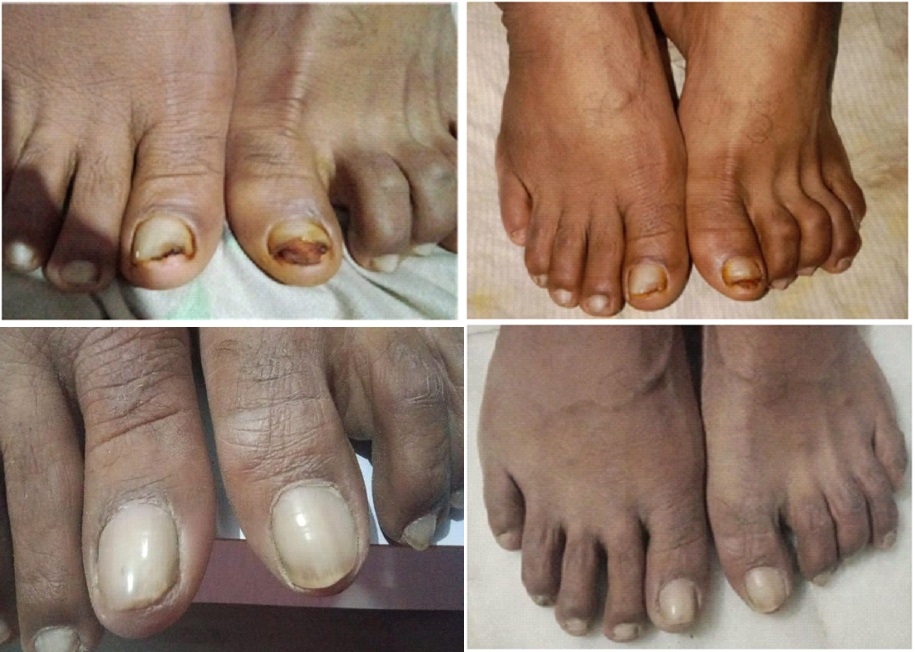An Ayurvedic Approach to Paronychia w.s.r. to Kunakha: A Single Case Study
DOI:
https://doi.org/10.47070/ayushdhara.v10iSuppl3.1197Keywords:
Kshudraroga, Paronychia, Asthimajjavruta vata, KunakhaAbstract
In Ayurveda all types of nail infections are referred as Kunakha. Word ‘Ku’ means ‘Bad’ and ‘Nakha’ means nail. In modern science, paronychia is one of the clinical conditions of nail bed infection. It induces ugliness to hands due to chronic recurrent infection, which is generally bacterial or fungal in nature. A single case study showing Kunakha condition, which had resistant to therapy in contemporary science, encouraging results after the administration of external and palliative Ayurvedic treatment (Shaman Chikitsa). Consecutive administration of Ayurvedic treatments (internal and external) for 60 days had shown positive outcomes in clinical symptoms as well as a notable change in appearance. The pathogenic characteristics of the nail were successfully diminished by the Shothahara, Rakta Prasadaka, and Strotoshodhaka action of the therapy, which was planned according to the fundamentals of Ayurveda.
Downloads

Downloads
Published
Issue
Section
License
Copyright (c) 2023 AYUSHDHARA

This work is licensed under a Creative Commons Attribution-NonCommercial-ShareAlike 4.0 International License.


